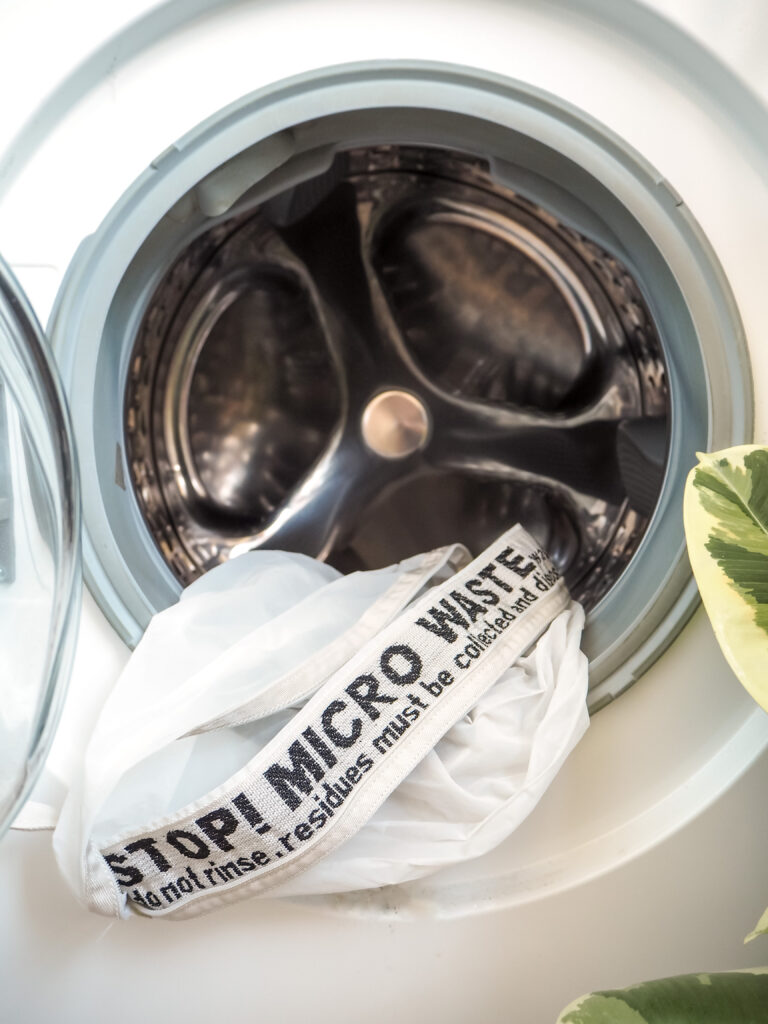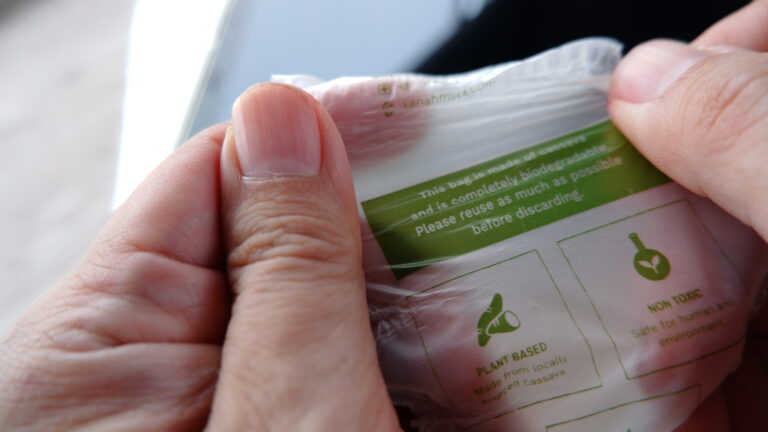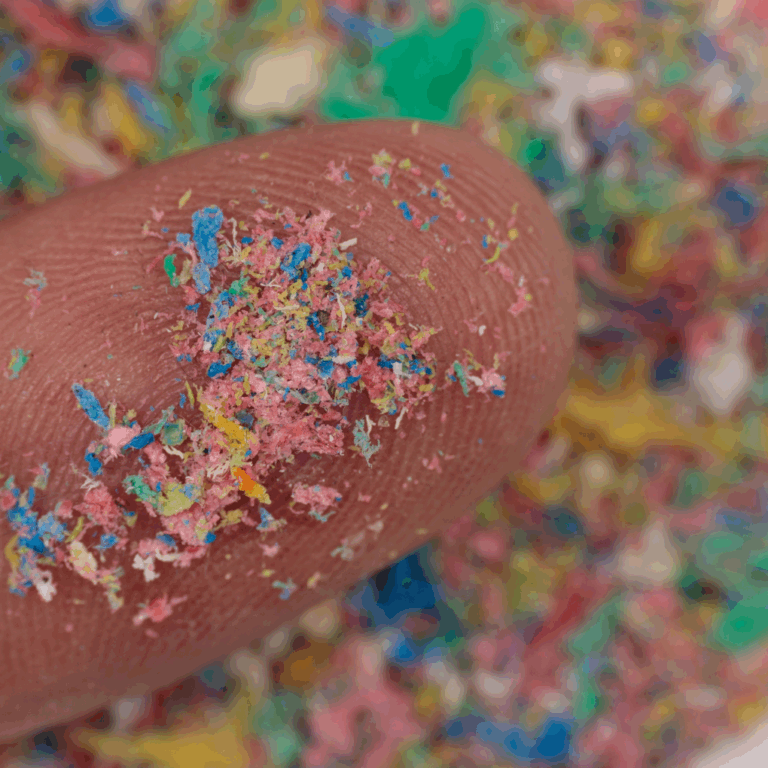A startling study published in January 2024 revealed the unsettling truth about bottled water: each liter contains an average of 240,000 plastic particles, with 90% being nanoplastics—particles so tiny they can infiltrate our bloodstream and cells.1 While plastic pollution has long been visible in our environment, these invisible particles pose a potentially more significant threat, as they can cross biological barriers and accumulate in our bodies.
For the millions who rely on bottled water, understanding the risks of nanoplastics isn’t about fear—it’s about making informed choices about our health and consumption habits.
In this article, we’ll explore what nanoplastics are, examine current research findings in bottled water, and share practical solutions for protecting yourself. You’ll learn about effective filtration methods and discover safer alternatives for drinking water. Whether you’re a regular bottled water consumer or simply concerned about plastic pollution, this guide will help you make better-informed decisions about your drinking water.
What Are Nanoplastics?
Nanoplastics are tiny plastic particles measuring less than 1 micrometer (1,000 nanometers) in size—smaller than bacteria and many viruses. To put this in perspective, human hair is approximately 70 micrometers wide, making nanoplastics about 70,000 times smaller.
Unlike their larger cousins, microplastics (which range from 5 millimeters to 1 micrometer), nanoplastics can bypass our body’s natural defense barriers. While microplastics are concerning because they can be ingested, nanoplastics pose a more significant threat due to their ability to penetrate human cells, cross the blood-brain barrier, and potentially interfere with cellular processes.
These tiny particles form through several processes. Primary nanoplastics are intentionally manufactured at this size for industrial uses, such as in cosmetics or paints. Secondary nanoplastics—the type most commonly found in bottled water—form when larger plastic items break down due to environmental factors like UV radiation from sunlight, physical wear and tear, heat exposure, chemical degradation during manufacturing, and mechanical stress during bottling processes.
Are There Nanoplastics in Water Bottles?
Yes, scientists have found tiny pieces of plastic in bottled water, and their research has shown some interesting results about the types of plastic they discovered.2
What kind of plastic did they find? The most common types were:
- PET (the same plastic used to make water bottles)
- Polyamide (like what’s used in some filters)
- Polystyrene (think foam cups)
- Polyvinyl chloride (PVC)
Plastics enter bottled water in two main ways. First, during the bottling process, tiny plastic particles can be shed from the equipment and the bottles themselves as water is packaged. Second, the bottle itself contributes to contamination over time. If exposed to heat or sunlight, the plastic gradually breaks down into microscopic fragments that mix with the water inside.
What Brands of Bottled Water Have Nanoplastics?
Recent scientific research has revealed the widespread presence of nanoplastics across bottled water products. While this discovery affects all tested plastic bottles, understanding the factors influencing nanoplastic levels can help you make informed decisions.
Factors Influencing Nanoplastic Levels
Glass bottles typically have lower levels of nanoplastics than plastic ones since glass doesn’t break into microscopic particles. However, nanoplastics can still be present in glass-bottled water due to processing and handling during production.
Several environmental and physical factors can lead to higher nanoplastic concentrations in bottled water. These include exposure to heat and sunlight, which accelerate plastic breakdown, as well as the length of storage time and the type of packaging material used. Manufacturing and bottling processes can also introduce additional plastic particles into the water.
Nanoplastics in Bottled Water: A Growing Concern
Right now, there are no specific regulations limiting nanoplastics in bottled water. While the FDA and bottled water companies are starting to acknowledge the issue, the industry faces some significant challenges. Studies in over 40 countries have found inorganic, organic, and microbiological contaminants in hundreds of bottled water brands—sometimes exceeding both local and global safety standards. This raises serious questions about the common belief that bottled water is always a safe choice.
The bottled water industry pulls in around $270 billion a year, but it also produces roughly 600 billion plastic bottles annually. That adds up to about 25 million tonnes of plastic waste, much of which ends up in landfills or as unregulated waste.3 While awareness of plastic pollution is growing, there’s still no game-changing solution to tackle this massive problem.
Some manufacturers are investigating better production methods and packaging alternatives, but there is little transparency and no legal requirement for companies to disclose their full environmental impact. As research continues, industry leaders and regulators will need to examine water quality and the growing concerns about plastic pollution more closely.
How Nanoplastics Could Affect Your Health
While scientists are still studying how nanoplastics affect our health, early research gives us reasons to be careful. These tiny plastic particles can do things larger plastics can’t – they’re so small they can travel through our bloodstream and into different organs in our body in ways we didn’t expect.
What concerns researchers most is that nanoplastics can carry harmful chemicals with them as they move through our bodies, potentially affecting how our cells work. Over time, these particles might build up in our system. Scientists are particularly interested in understanding how exposure affects growing children, pregnant women, and people with existing health conditions.
A perspective article in Environmental Science: Nano explores how microplastics and nanoplastics don’t just pass through our bodies—they can cross physiological barriers and settle into different areas, including the brain. Researchers highlight how these tiny plastic particles may slip past the blood-brain barrier, potentially harming the central nervous system and even playing a role in neurodegenerative diseases like Alzheimer’s and Parkinson’s.4
It’s important to note that researchers are still working to understand the long-term effects of nanoplastic exposure. While this might sound scary, remember that being aware helps us make better choices about our drinking water.
How to Remove Nanoplastics from Drinking Water?
Let’s explore ways you can reduce nanoplastics in your drinking water. While no method is perfect, some filters work better than others.
Water Filtering Methods That Can Help:
- Reverse Osmosis Systems: These are the most effective for removing nanoplastics. They force water through a very tight membrane that can catch particles as small as 0.001 micrometers. This means they can trap many nanoplastics!
- Carbon Block Filters: While not as effective as reverse osmosis, these filters can catch some larger nanoplastics. Think of them like a super-fine net that catches tiny plastic pieces.
- Multi-Stage Filtration: These systems use different types of filters together. It’s like having multiple safety nets to catch as many plastic particles as possible.
Note: Under-sink reverse osmosis systems are the most effective and expensive option. Countertop water filters offer easier installation but don’t filter as thoroughly. Water pitcher filters are the most convenient choice, though they provide the least filtration.
Related article: How to Remove Microplastics
This Has Been About Nanoplastics in Bottled Water
Nanoplastics in bottled water are an increasing concern, with little regulation or transparency in place. While the industry is beginning to recognize the issue, research continues to reveal contamination levels that call into question the idea that bottled water is always a safe choice. Meanwhile, the immense plastic waste from bottled water production only worsens environmental pollution. The simplest way to protect yourself and reduce plastic waste is to filter your water and opt for a reusable, plastic-free bottle.
References
- Qian, N., Gao, X., Lang, X., Deng, H., Bratu, T. M., Chen, Q., Stapleton, P., Yan, B., & Min, W. (2024). Rapid single-particle chemical imaging of nanoplastics by SRS microscopy. Proceedings of the National Academy of Sciences, 121(3), e2300582121. https://doi.org/10.1073/pnas.2300582121 ↩︎
- National Institutes of Health. (2024). Plastic particles in bottled water. Retrieved from https://www.nih.gov/news-events/nih-research-matters/plastic-particles-bottled-water ↩︎
- United Nations University Institute for Water, Environment and Health. (2023). Global bottled water industry: Review, impacts, and trends. Retrieved from https://unu.edu/inweh/collection/global-bottled-water-industry-review-impacts-and-trends ↩︎
- Moiniafshari, K., Zanut, A., Tapparo, A., Pastore, P., Bogialli, S., & Abdolahpur Monikh, F. (2025). A perspective on the potential impact of microplastics and nanoplastics on the human central nervous system. Environmental Science: Nano. Advance online publication. Retrieved from https://pubs.rsc.org/en/content/articlelanding/2025/en/d4en01017e#cit23
↩︎






